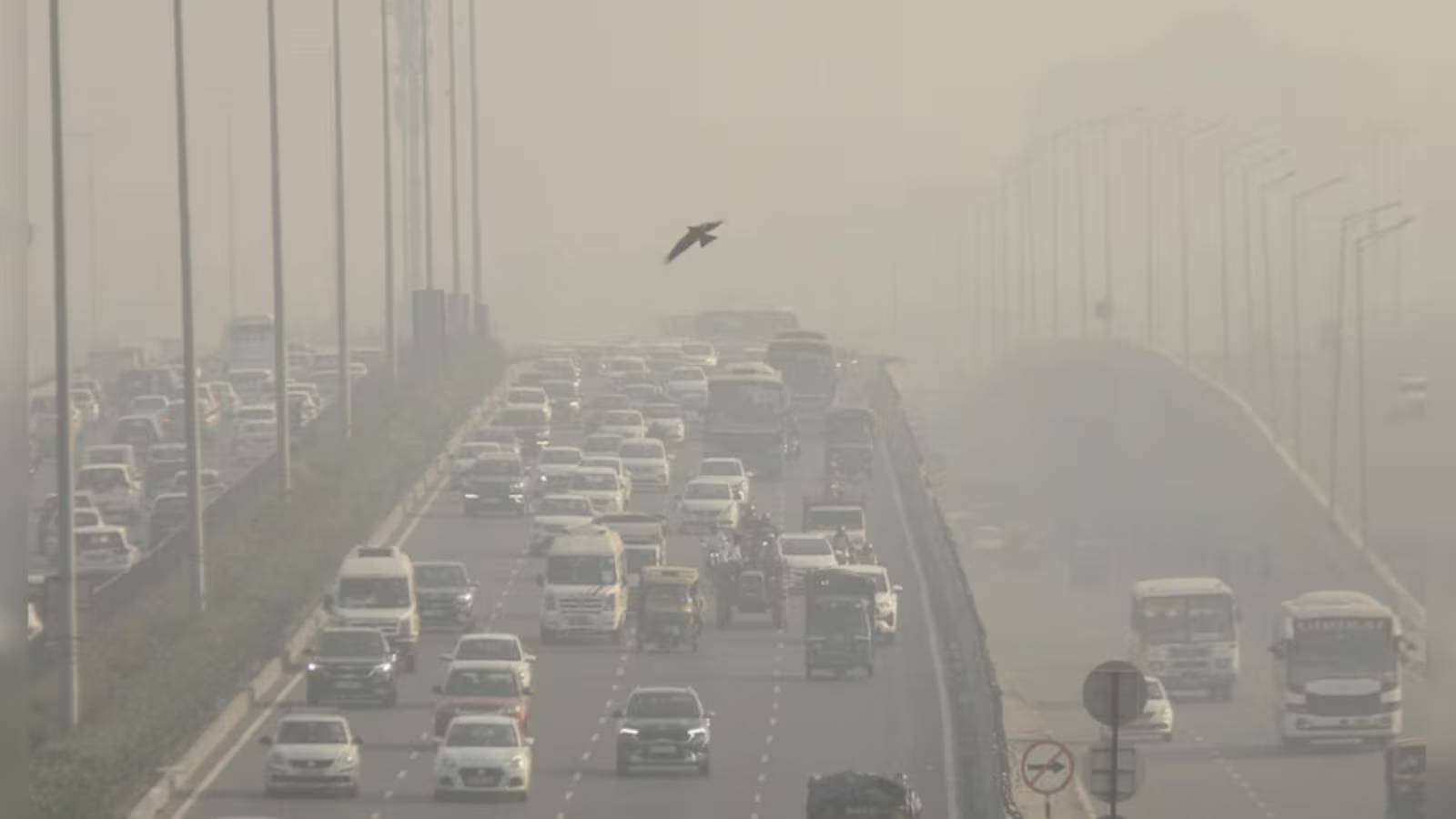Delhi woke up to another day of thick smog and poor visibility on Tuesday as the city’s air quality remained in the “very poor” category for the fifth straight day. A dense layer of haze covered several parts of the capital early in the morning, while the minimum temperature dipped to 9.6°C, three degrees below the normal for this time of year.
According to the Central Pollution Control Board (CPCB), Delhi recorded an average AQI of 344 at 8 am, slightly lower than Monday’s 351 and Sunday’s 377. The slight improvement has been linked to stronger wind speeds on Sunday and a noticeable decline in stubble-burning activity. However, experts warn that the AQI is expected to remain “very poor” in the coming days.
Smog Likely to Persist Until Thursday
The Early Warning System (EWS) under the Ministry of Earth Sciences has predicted that Delhi’s air quality will stay in the “very poor” range from November 18 to November 20. The system added that even the following six days show no signs of major improvement.
With pollution levels remaining severe, Stage 3 restrictions of the Graded Response Action Plan (GRAP) have been active since November 11. These measures include curbs on construction, restrictions on diesel generators, and advisories for work-from-home where possible.
Temperature Drops as Winter Chill Sets In
The mercury slipped to 9.6°C on Tuesday, following the season’s lowest minimum of 8.7°C recorded just a day earlier. Meteorologists expect the minimum temperature to fluctuate between 9°C and 11°C until Thursday.
A shift to easterly winds after November 21 may push the minimum temperature above 11°C, easing the winter chill slightly. A “cold wave” can only be declared if the minimum temperature falls below 10°C and remains 4.5°C or more below normal, conditions that have not yet been met.
Why the Temperature Is Falling
Mahesh Palawat, Vice President at Skymet Weather, said the drop in temperatures is mainly due to northwesterly winds and clear skies, which lead to radiational cooling. With no cloud cover at night, the earth loses heat faster, causing the temperature to drop.
Palawat added that while the minimum temperature may dip further in the coming days, a cold wave is unlikely. He also mentioned that no significant western disturbance is expected until the end of November.
Stubble Burning Contribution Drops Slightly
Data from the Decision Support System (DSS) showed that the contribution of stubble burning to Delhi’s PM2.5 levels was 16.47% on Saturday, but it dipped to 12.8% on Sunday. DSS did not provide data for Monday, but the reduced share is one of the factors behind the slight improvement in air quality.
Despite the minor relief, pollution levels remain high enough to cause health concerns, especially for sensitive groups like children, the elderly, and those with respiratory conditions.













